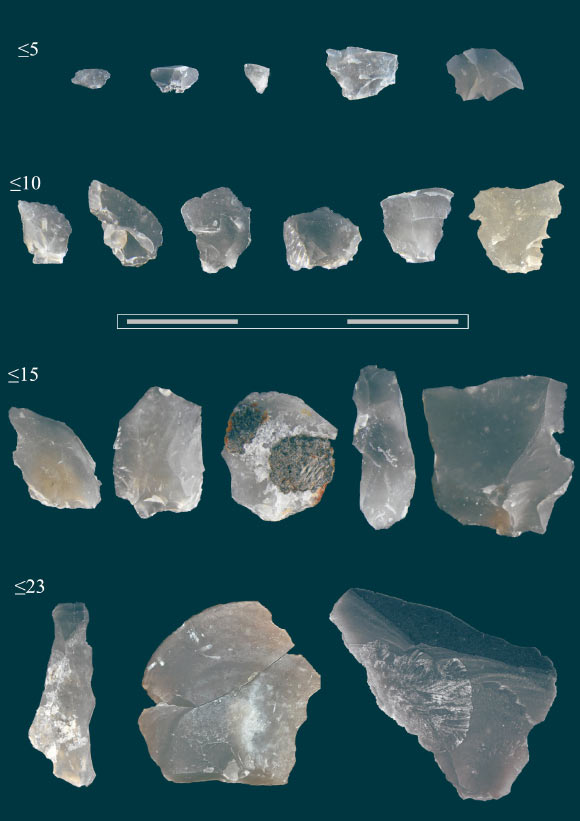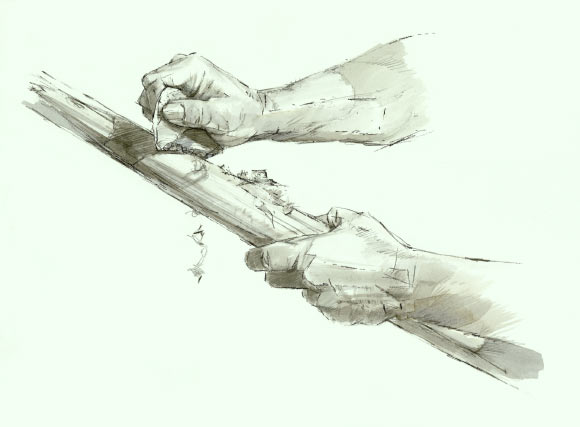
The Middle Pleistocene is a crucial time period for the study of human evolution in Europe, as it marks the appearance of fossil hominids, the ancestors of later Neanderthals.
Scientists from a university in Germany have conducted a thorough and in-depth study of tiny scales from the Middle Pleistocene of Schöningen in Lower Saxony.
Back in the 2010s, archaeologists excavated in Schöningen, where they discovered a 300,000-year-old skeleton of an extinct Eurasian elephant with a straight tusk (Palaeoloxodon antiquus). This excavation is also known for the discovery of wooden spears, cut remains of large mammals, as well as the remains of saber-toothed (Homotherium latidens).

Flint chips are sorted by size in millimeters. Scale - 3 cm.
The scientists examined 57 small stone chips and three bone tools for sharpening stone tools, which are associated with the skeleton of an elephant with a straight tusk. This discovery indicates that early Neanderthals used a variety of tools, which in turn expands our view of the Stone Age.
"We can prove, among other things, with the new findings, that humans - probably Homo heidelbergensis or early Neanderthals - were in the vicinity of the elephant carcass," said the doctor, a researcher at the Senckenberg Center for Human Evolution and Palaeoenvironment.
"The history of the Stone Age is told mainly through the study of objects created by our ancestors," said the researcher of the Department of Early Prehistory and Quaternary Ecology.
And although it is commonly believed that it is the large tools, such as scrapers or knives, that are important, but in fact, the small flakes that are the "consequences" of the production of tools may be more significant. Even simple microscopic stone fragments reveal the way of life of our ancestors.
"Most of the fragments studied were less than 1 cm. The small flakes come from knife-like tools, they were left during re-sharpening. The chips fell to the ground, where they remained when people moved on with their tools," says Dr. Venditti.
Experts say that 15 items showed signs of use typical of fresh wood processing.
"In addition, the micro-wear of a fragment of natural flint with sharp edges proved that people used it to cut fresh animal tissue. It is likely that this flint was used to slaughter an elephant."
"These results are further evidence of the combined use of stone, bone and plant technology 300,000 years ago, as has been documented several times in Schöningen. And it shows how a detailed analysis of traces of use and micro-residues can provide information about small artefacts that are often ignored," said the professor at the University of Tübingen.

Reconstruction of Homo heidelbergensis processing wood with a scraping tool. Image: Benoit Clarys.
To conduct such research, an interdisciplinary approach was applied. This includes technological analysis, spatial analysis, study of remains, as well as methods of experimental archaeology.
And the most important condition for such research is extremely careful handling of the artifact, from the beginning, that is, excavations, and throughout the further analysis.
"This is the first study that gives such comprehensive results on 300,000-year-old scales."
